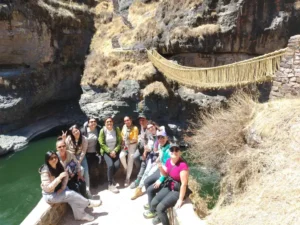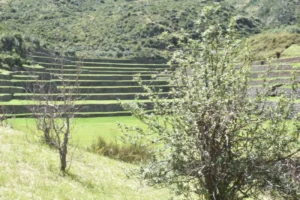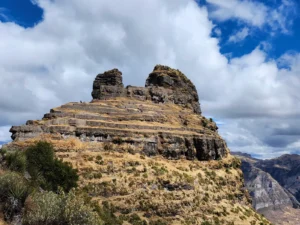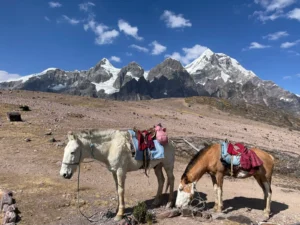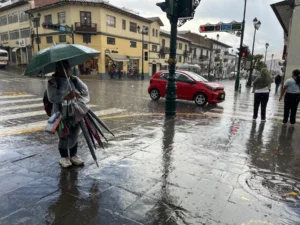Q’eswachaka: The world’s last living Inca bridge
Deep in the Peruvian Andes, crossing the Apurímac River in the Cusco region, stands—or rather, hangs—a masterpiece of ancient engineering: Q’eswachaka. It is not just a bridge. It is a living symbol of cultural resistance, a collective ritual that is repeated every year, and the last tangible testimony to a tradition that the Incas spread throughout their empire.
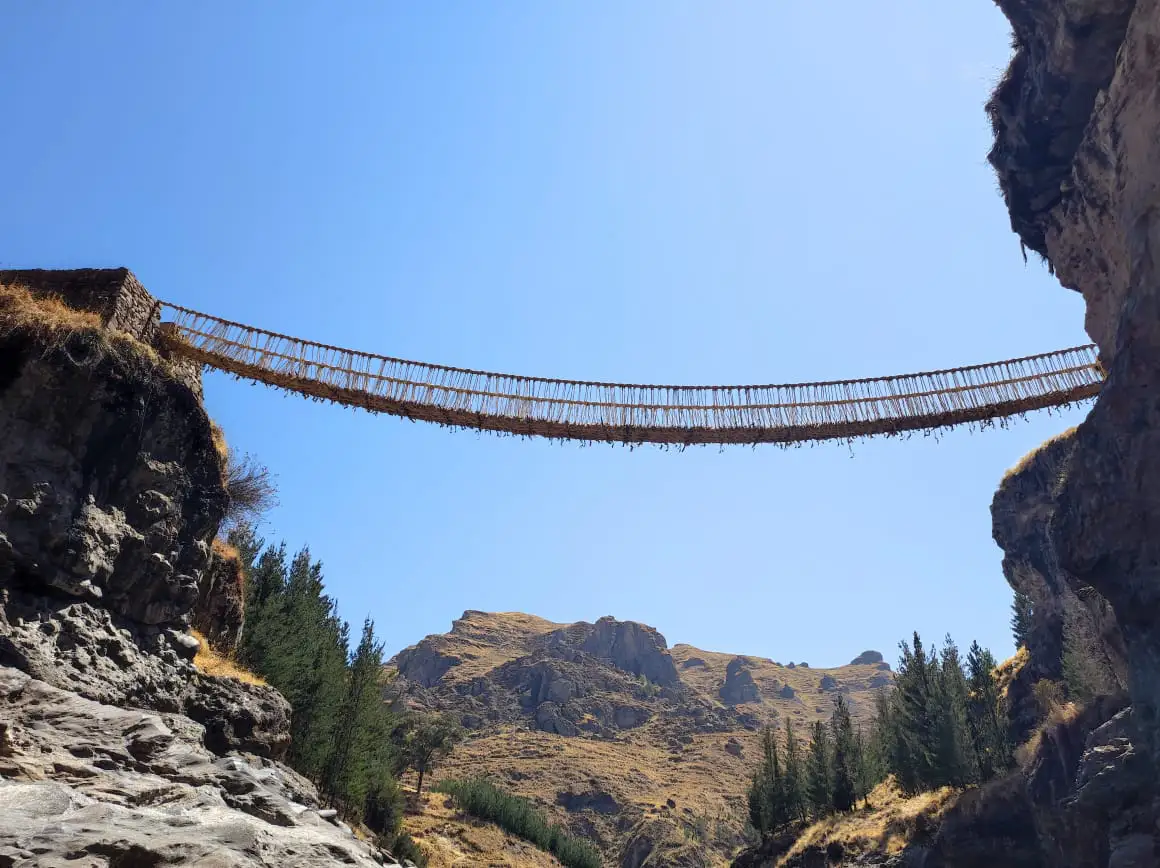
Contents
What is Q’eswachaka?
Q’eswachaka—also spelled Q’iswa Chaka, Keswachaka, or Queshuachaca—is a suspension bridge made entirely of plant fibers, built and rebuilt each year by Quechua communities in the province of Canas, in Cusco. Its name comes from the Quechua words “q’iswa” (rope) and ‘chaka’ (bridge). Literally, “rope bridge.”
What makes it unique in the world is that it has been continuously built since pre-Hispanic times. Despite the arrival of the Spanish, modern roads, and steel bridges, these communities have kept the ancestral technique alive, passed down from generation to generation. In 2013, UNESCO declared it an Intangible Cultural Heritage of Humanity, recognizing not only the structure but also the community ritual that sustains it.
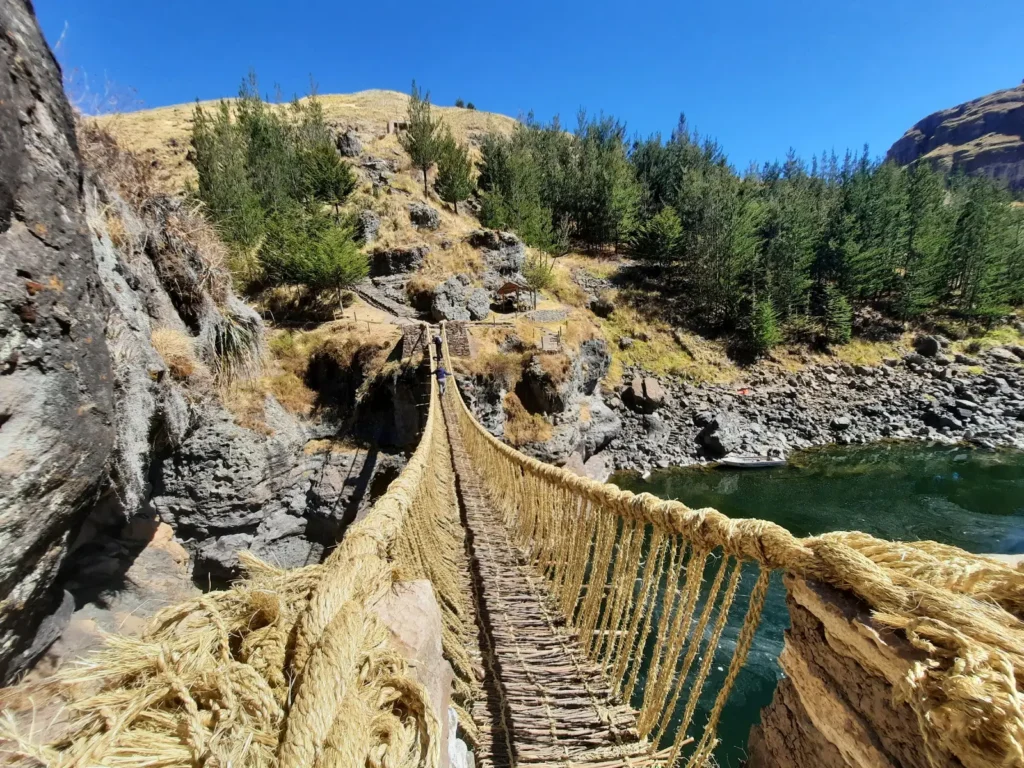
The annual ritual: more than just a construction project
Every June, thousands of people—including community members, local authorities, tourists, and curious onlookers—gather on the slopes of the Apurímac River to participate in or witness the annual reconstruction of the bridge. This event lasts four days and follows a precise, almost sacred ritual.
The process begins with the harvesting of ichu, a resistant Andean grass that grows at high altitudes. The women braid it into thin ropes, which the men then weave together to form the thick cables that will support the bridge. During the days of work, offerings are made to Pachamama, communal meals are shared, and songs are sung in Quechua invoking protection and strength.
On the last day, the new cables replace the old ones, and the bridge is stretched across the abyss. To close the ceremony, a party is held with music, dancing, and chicha, celebrating not only the completed work but also the collective identity that made it possible.
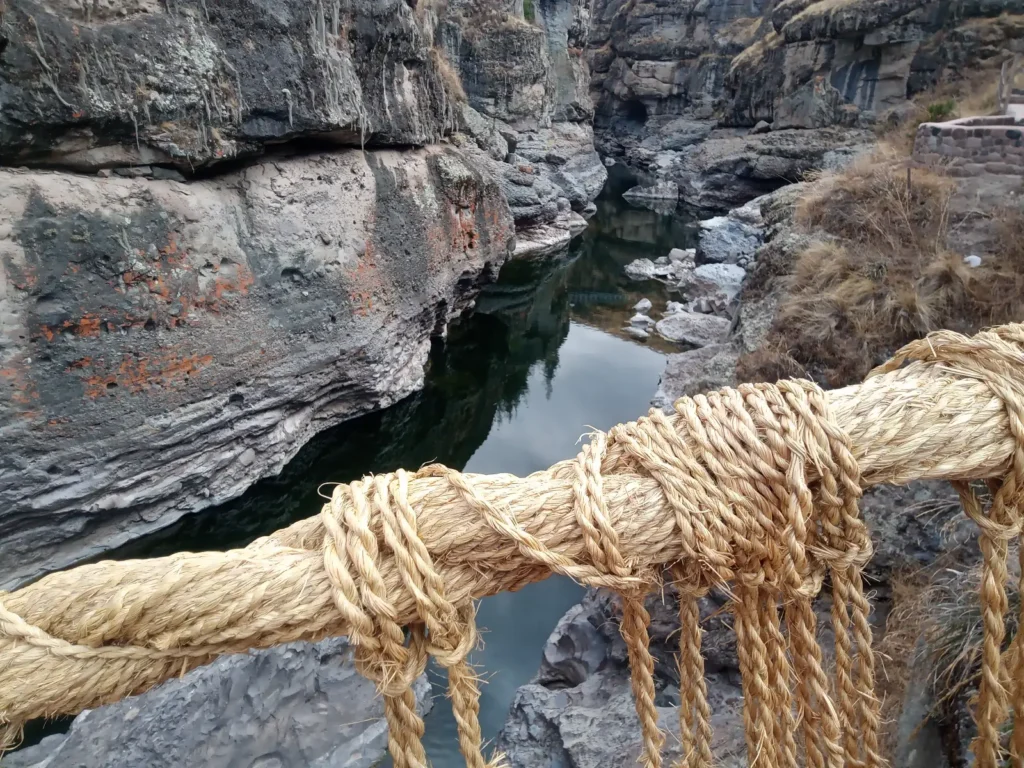
Where is it and how do I get there?
Q’eswachaka is located in the district of Quehue, province of Canas, in southern Cusco. It is about a 3.5-hour drive from the city of Cusco, passing through Sicuani. The road is unpaved in its final stretch, so a high-clearance vehicle or joining an organized tour is recommended.
The walk from the parking lot to the bridge takes about 20 minutes downhill—and the same amount of time, but with more effort, on the way back. The setting is spectacular: rugged mountains, the Apurímac River roaring below, and the bridge swaying gently in the wind.
Why is it important to visit?
Visiting Q’eswachaka is not just about crossing a bridge. It is about witnessing a living tradition, understanding how Andean communities have managed to preserve their knowledge in the face of modernity, and experiencing the power of collective work. Walking on its ropes, feeling how it moves under your feet, connects you with centuries of history.
What’s more, by visiting, you are directly supporting local communities. The entrance fee is symbolic (around 10 soles), and you can hire guides, buy handicrafts, or share a meal prepared by local families.
When to go?
If you want to experience the annual reconstruction, you should plan your trip for mid-June. The exact dates vary each year depending on the agricultural and lunar calendar, so it is advisable to confirm in advance.
Outside of this period, the bridge is open to visitors all year round. The dry season (April to October) is the most recommended: the roads are passable, the sky is clear, and the river, although imposing, does not pose any additional danger.
Q’eswachaka and the Inca legacy
The Incas built a network of roads—the Qhapaq Ñan—that linked their entire empire, from Colombia to Chile. In this system, suspension bridges were essential for crossing rivers and ravines. It is estimated that there were hundreds, perhaps thousands. Today, Q’eswachaka is the only one that remains with the original techniques and materials, thanks to the determination of four communities: Huinchiri, Chaupibanda, Choccayhua, and Ccollana Quehue.
This bridge is not a replica or a tourist attraction: it is an act of memory, resistance, and devotion. Each braided fiber is a thread that links the past and the present.
Tips for your visit
The altitude (over 3,700 meters above sea level) can affect those who are not acclimatized. It is recommended to spend at least one day in Sicuani or in higher areas before your visit. Bring warm clothes—the wind in the canyon is intense—water, snacks, sunscreen, and comfortable shoes.
If you plan to cross the bridge, take your time. It is about 28 meters long and hangs 30 meters above the river. Although it is completely safe—it is checked and tested every year—it can be intimidating for those who are afraid of heights.
Conclusion
Q’eswachaka is not a static monument in a history book. It is a living heartbeat of Andean culture, a lesson in sustainable engineering, and a reminder that some traditions deserve not only to be preserved but also celebrated. To cross this bridge is to cross centuries, to walk the same path as the Inca messengers, the chasquis, and to feel, even if only for a few seconds, the soul of a people who have never stopped weaving their own destiny.


